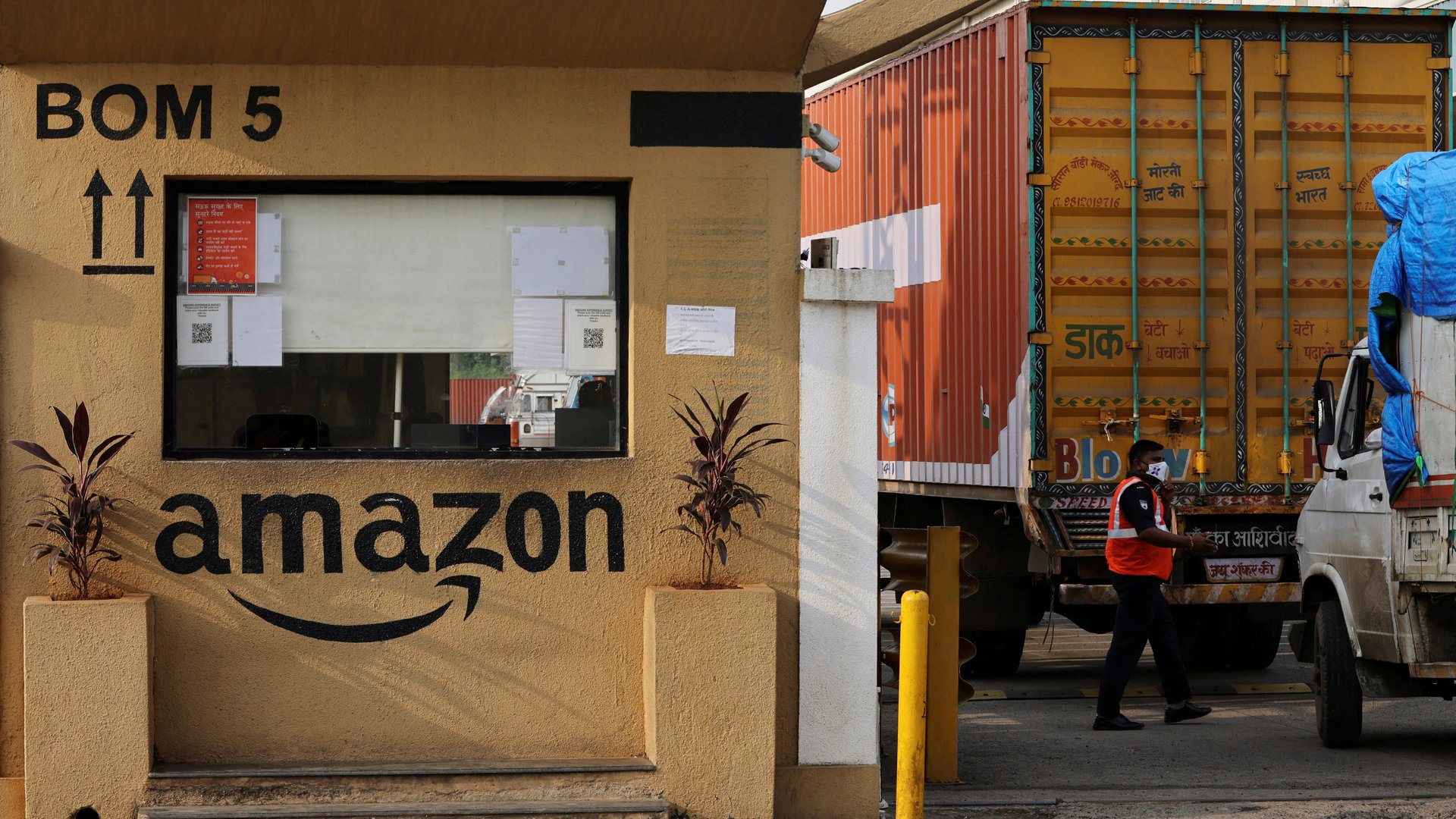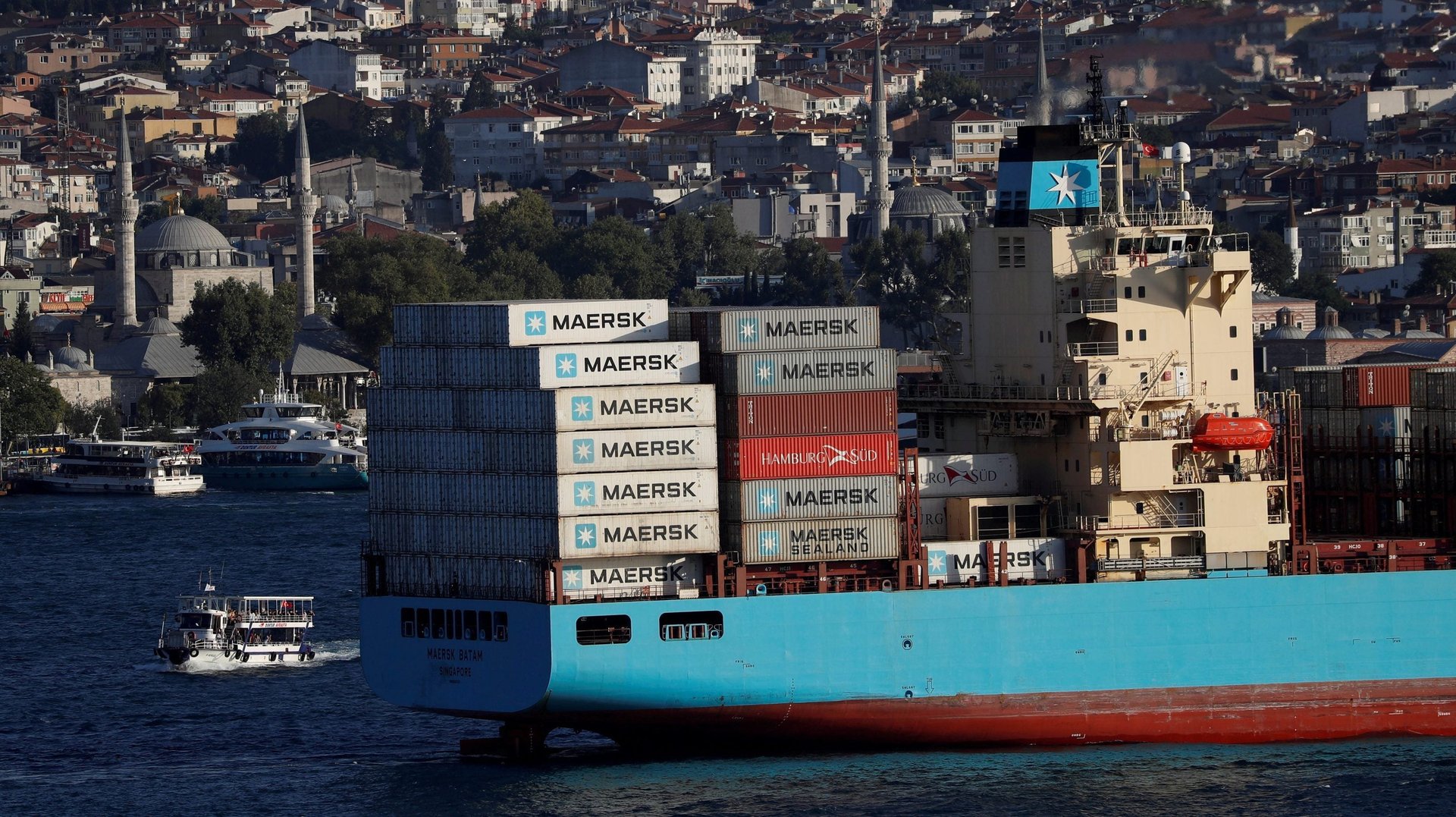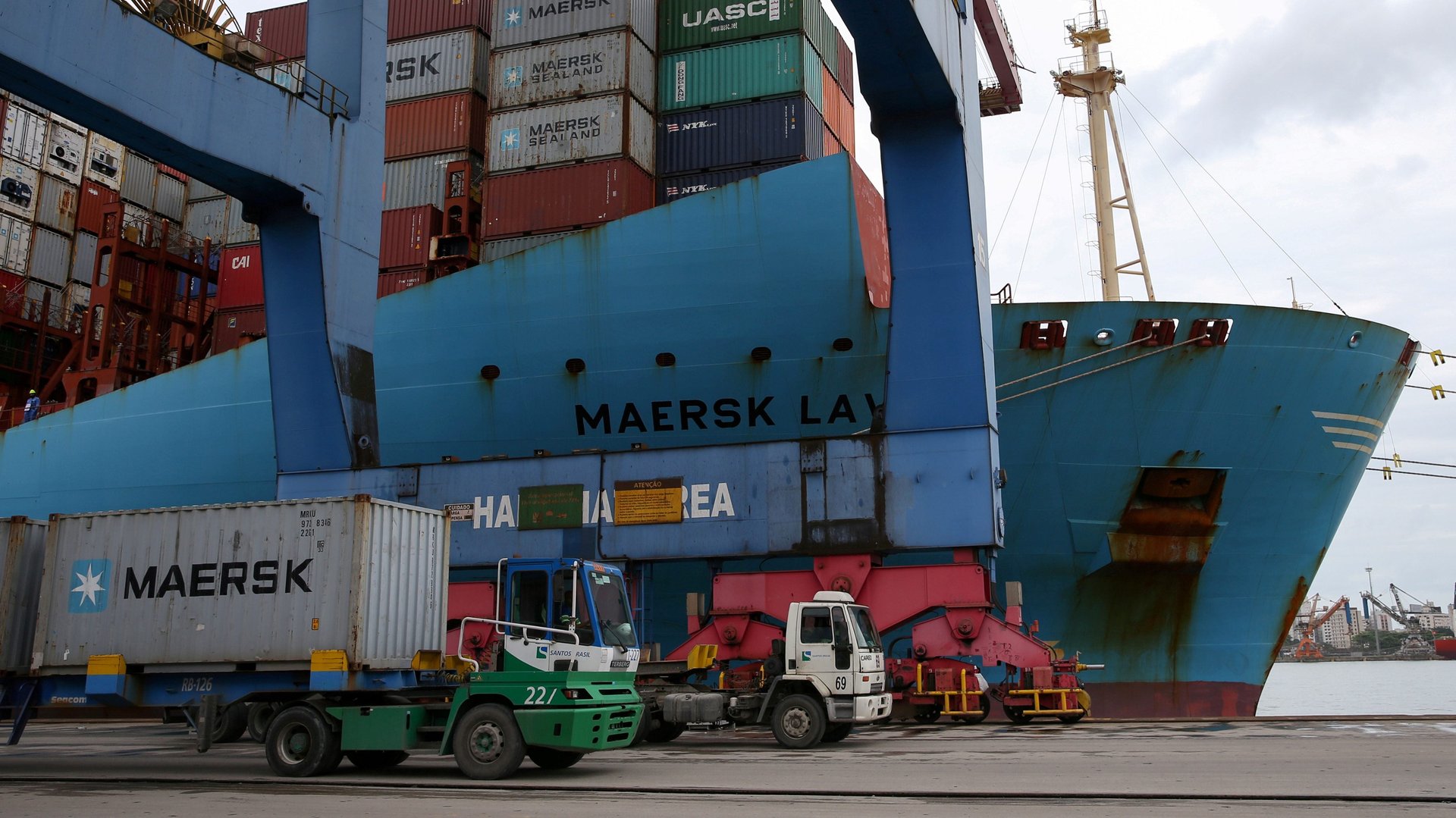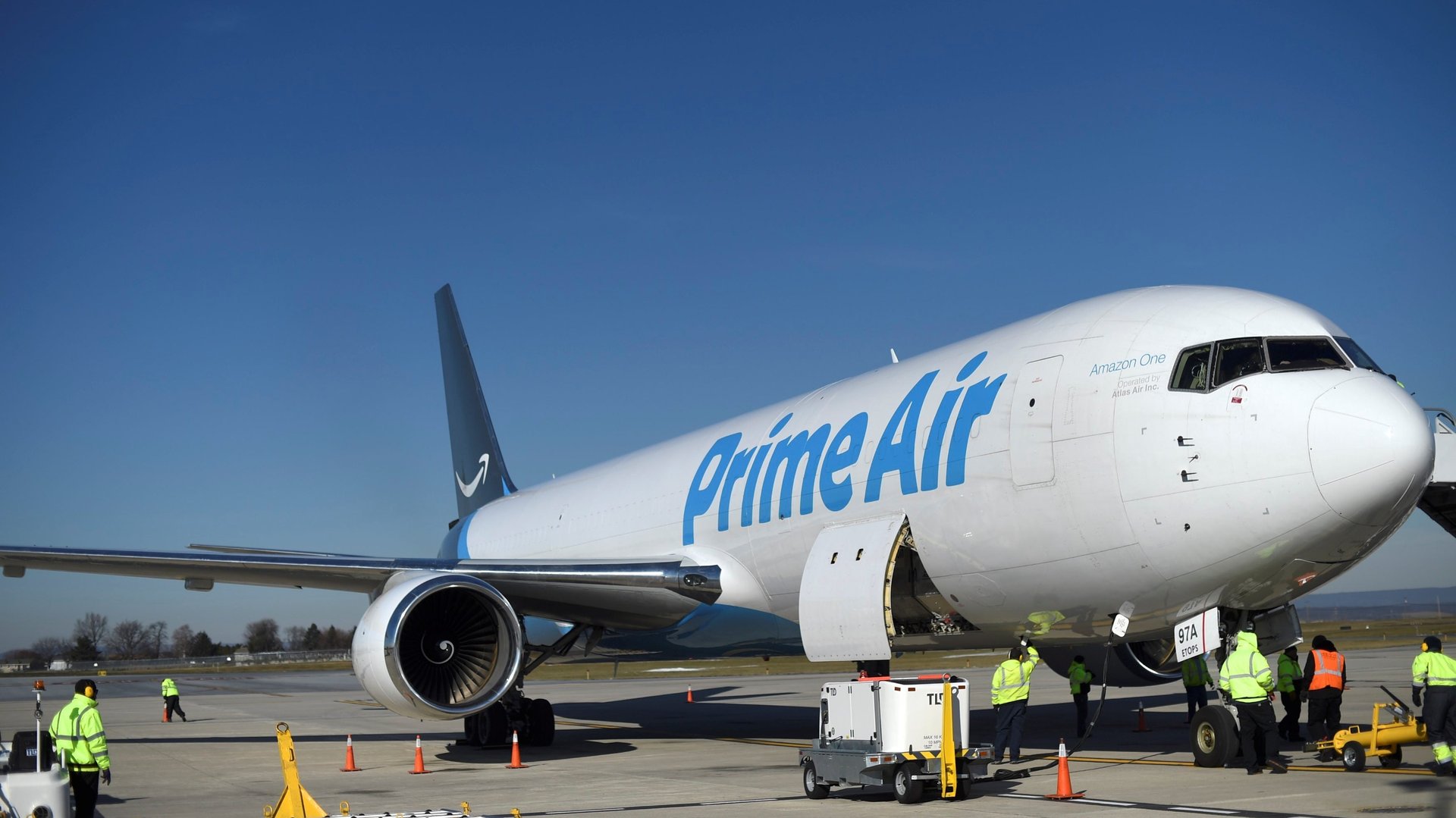Amazon and Maersk are setting up a fight for the world’s supply chains
For the past five years, one of the world’s largest shipping lines has been expanding into every other step of the supply chain. Maersk can now arrange air freight, trucking, warehousing, and even last-mile delivery for its customers.


For the past five years, one of the world’s largest shipping lines has been expanding into every other step of the supply chain. Maersk can now arrange air freight, trucking, warehousing, and even last-mile delivery for its customers.
Meanwhile Amazon, which has been handling warehousing and last-mile delivery for its sellers since 2006, has been expanding further up the supply chain. Seeking tighter control over its own logistics, it’s now involved in long-haul trucking and air freight, and even charters its own ships to move goods around the world. It has also started moving cargo for companies that don’t sell on Amazon but want to use the e-commerce giant as a courier.

Over the next decade—if these trends hold—Amazon and Maersk’s ambitions will start to overlap. The companies will be competing for many of the same e-commerce clients and selling a similar all-in-one service for getting products from a factory loading dock to a customer’s door.
“It’s creating this battle between these two very different beasts that will probably come to a head at some point in the next couple of years,” says Eytan Buchman, who heads marketing at the freight booking platform Freightos and has written about Maersk’s pivot away from a business model focused solely on shipping.
Neither company is likely to develop a monopoly over the entire global logistics market, which is vast, fragmented, and governed by a patchwork of regional regulations that are so misaligned and intricate that local operators will always have an advantage against competition from global behemoths. But Amazon and Maersk can corner off the most lucrative niches in logistics, particularly e-commerce fulfillment in the world’s wealthiest countries.
The battle brewing between them now will determine how they split control over some of the most profitable supply chains on the planet.
Maersk’s end-to-end supply chain ambitions
Maersk’s ambition to transform itself into a one-stop logistics shop dates back to 2016, a dark year for shipping. Slowing economies in Europe and China, along with an increase in the supply of ships, led global freight rates to tank, causing Maersk’s profits to plummet and prompting one of its big competitors, Hanjin, then the world’s seventh largest shipping line, to declare bankruptcy in 2015. To make matters worse, oil prices were down, causing Maersk to lose money on another of its major business lines, oil exploration and drilling operations.
In September 2016, Maersk unveiled a new corporate strategy: The company would sell its oil business the next year, and expand beyond the hardscrabble world of shipping to focus on more lucrative parts of the supply chain. Maersk turbocharged its makeover using the $21 billion in profit it made during the pandemic.
In addition to expanding its fleets of trucks and cargo planes, Maersk has bought five companies in the past three years that hint at its plans for the future. In November 2021, Maersk bought the freight forwarder Senator International.
Normally, freight forwarders act as middlemen between shipping lines or airlines and customers who need to move cargo. But Maersk has been working to cut out the middleman and sell freight forwarding services to its customers directly. In addition to buying up freight forwarders, Maersk has also revamped its website to allow companies—particularly, small or mid-sized e-commerce sellers—to book space on Maersk ships or planes directly.

Maersk also bought two customs brokerages (Vandegrift and KGH Customs) and two e-commerce fulfillment companies (Visible SCM and B2C Europe Holding) since 2019. Vandegrift and Visible SCM focus on the US, while KGH and B2C specialize in Europe. The acquisitions expand Maersk’s ability to bring its clients’ cargo off Maersk ships, get it through customs, transport it to regional warehouses, and eventually deliver it directly to customers’ doors on behalf of clients.
Amazon is building its next AWS
Amazon, meanwhile, began working to take control of its supply chains after a disastrous 2013 holiday shopping season. Before then, Amazon relied heavily on couriers like FedEx and UPS to deliver its packages. But in 2013, as e-commerce became more mainstream, the companies failed to keep up with the torrent of gifts US shoppers ordered from Amazon, leading to widespread delays. The next year, Amazon accelerated construction of its own distribution centers and began amassing fleets of semi-trucks, cargo planes, and delivery vans.
The pandemic accelerated Amazon’s ambitions to build out its own supply chains. Amazon spent about $80 billion a year on logistics infrastructure in 2020 and 2021, compared to the $56 billion investment in logistics the company made over the five years between 2015 and 2019. Amazon Air, the company’s in-house airline, amassed a fleet of 85 planes; the company also has begun making its own shipping containers and chartering its own cargo ships.

The rapid growth of Amazon’s logistics operation suggests the company is preparing to build a standalone courier business that will deliver goods for clients even if they aren’t Amazon vendors. That would replicate the strategy behind Amazon Web Services (AWS), the in-house division that met Amazon’s web hosting needs before selling its services to other companies and becoming one of the largest cloud computing businesses in the world (and Amazon’s most profitable unit).
Amazon is already testing a standalone courier service, dubbed Amazon Shipping, which is so far limited to the UK. Any e-commerce vendor—regardless of whether they sell on Amazon—can hire Amazon to deliver packages on its behalf. Analysts at Morgan Stanley predict Amazon will launch a similar service in the US this year.
A check on the giants’ growth
Amazon and Maersk are on a collision course to compete for e-commerce fulfillment clients in the US and potentially the UK and Europe. But it’s unlikely the companies will create a global shipping duopoly in the next decade.

First, the logistics industry is massive—worth somewhere between $8 trillion and $12 trillion annually—and no single company comes close to controlling it at global scale. Amazon, despite delivering most of its own packages, is still only the third largest courier in the US, behind UPS and the US Postal Service. Maersk, meanwhile, only controls about 17% of the market for container shipping. Even in their most dominant supply chain niches, Amazon and Maersk are not the biggest players, and there are dedicated competitors in package delivery (DHL, FedEx, UPS) ocean shipping (MSC, CMA GCM) and every other corner of logistics who will fight them for market share every step of the way.
Second, key parts of the logistics industry are very local. Customs brokerages specialize in the regulations of specific countries (or states). Short-haul trucking fleets generally operate within a single city or region, while long-haul fleets tend to confine themselves to one country or a few neighboring countries. In many of these cases, it would be more practical for Maersk and Amazon to partner with local logistics businesses rather than buy them or compete with them outright.
“One-stop shops are hard to build; they are even harder to expand globally,” Buchman wrote in an analysis of Maersk’s end-to-end logistics strategy. “[T]rue global capabilities with competitive pricing across local carriers, knowledge of local regulations, and specialization, is elusive.”
The rise of one-stop logistics shops
The most likely outcome, then, is not a world in which Maersk and Amazon control the movement of every package and shipping container across the globe. But the two companies do have the chance to offer a new, vertically integrated model of logistics, in which online retailers can outsource all of their transportation and delivery operations to a single provider.
These one-stop logistics shops could oversee the entire supply chain between a factory that produces a finished product and a customer’s doorstep, moving cargo on their own ships, planes, and trucks as much as possible, and partnering with local logistics operators to fill in the gaps in their own networks.
By consolidating the whole range of logistics services into one package, the one-stop shops promise to boost efficiency and lower prices. But the businesses that outsource their logistics to Amazon or Maersk will have much less flexibility to shape their own supply chains. In good times, that won’t matter: Clients will enjoy lower costs and the ease of not having to think about their supply chains. But in moments of crisis—like the pandemic-fueled supply chain chaos we’re living through now—those clients will be at the mercy of Amazon and Maersk’s decisions about which cargo to prioritize. That would give the two companies plenty of pricing power the next time the world’s supply chains get upended.